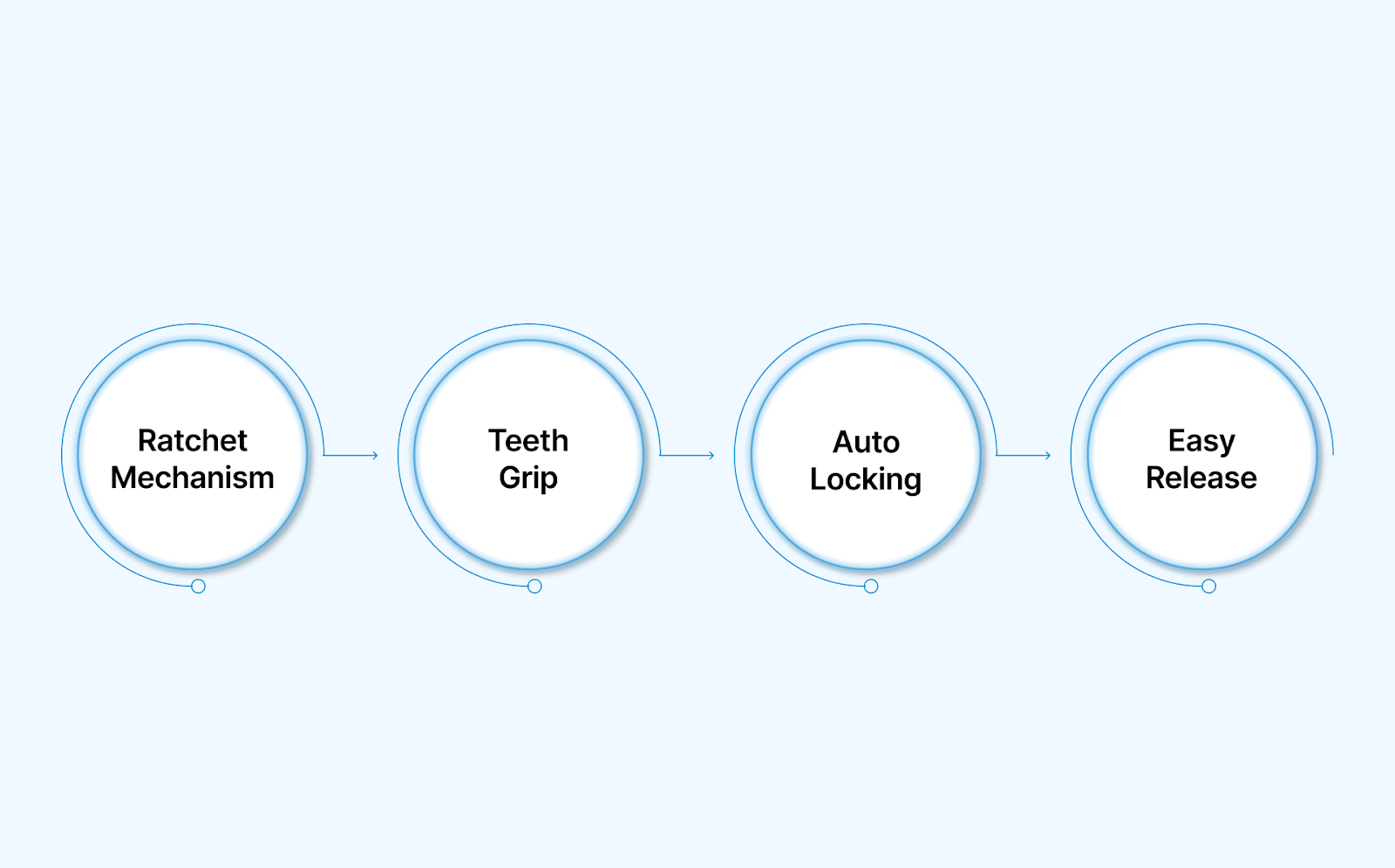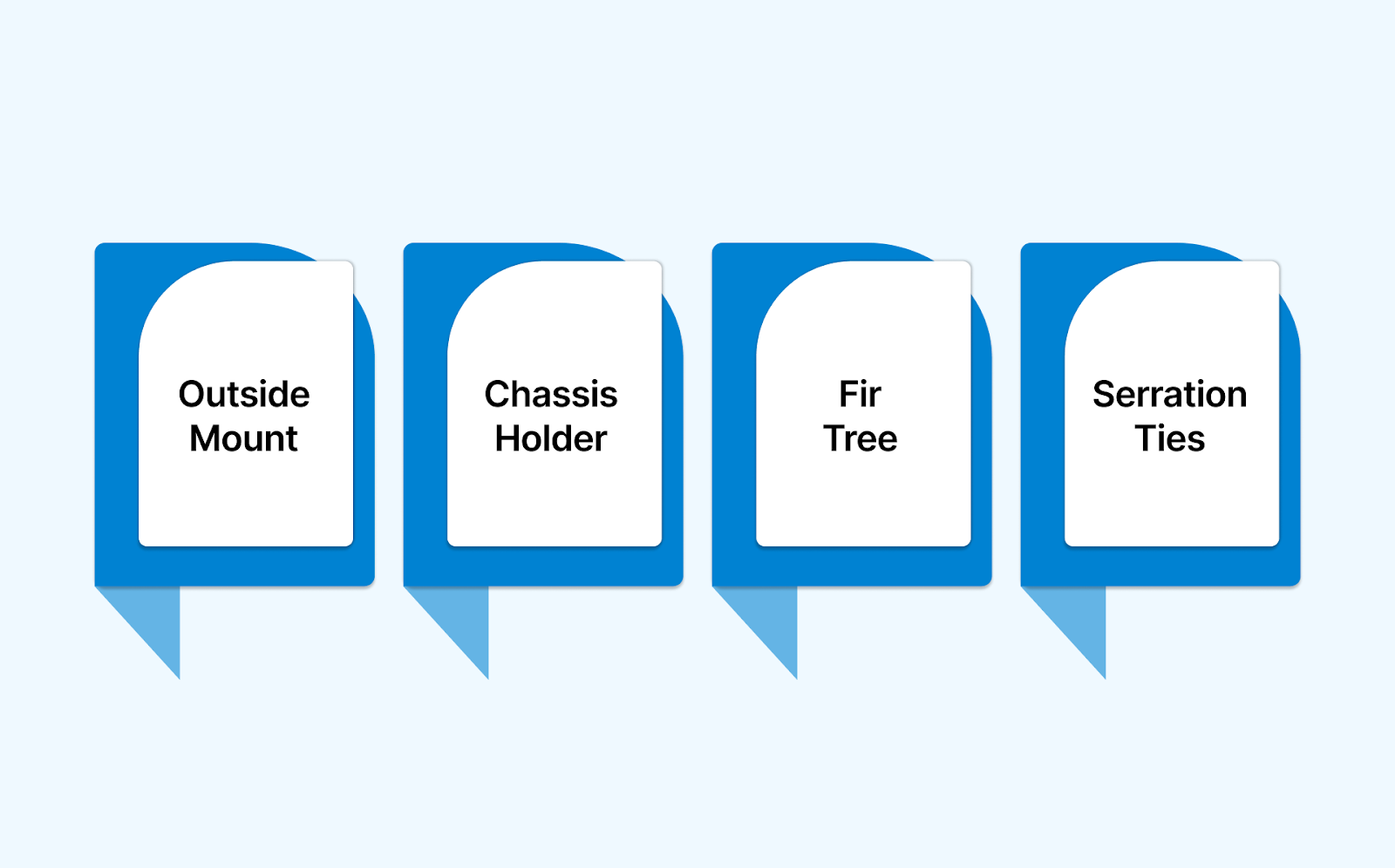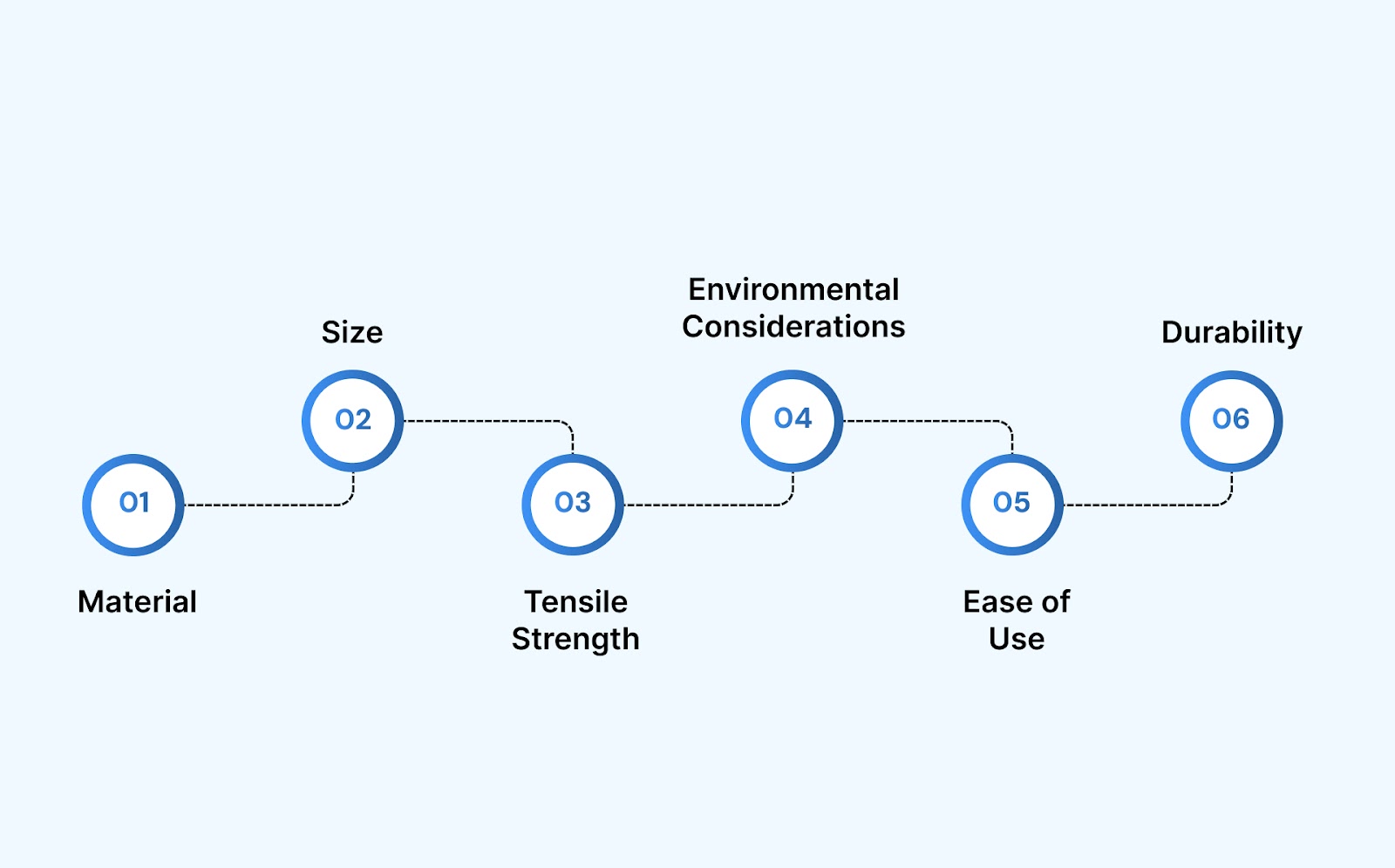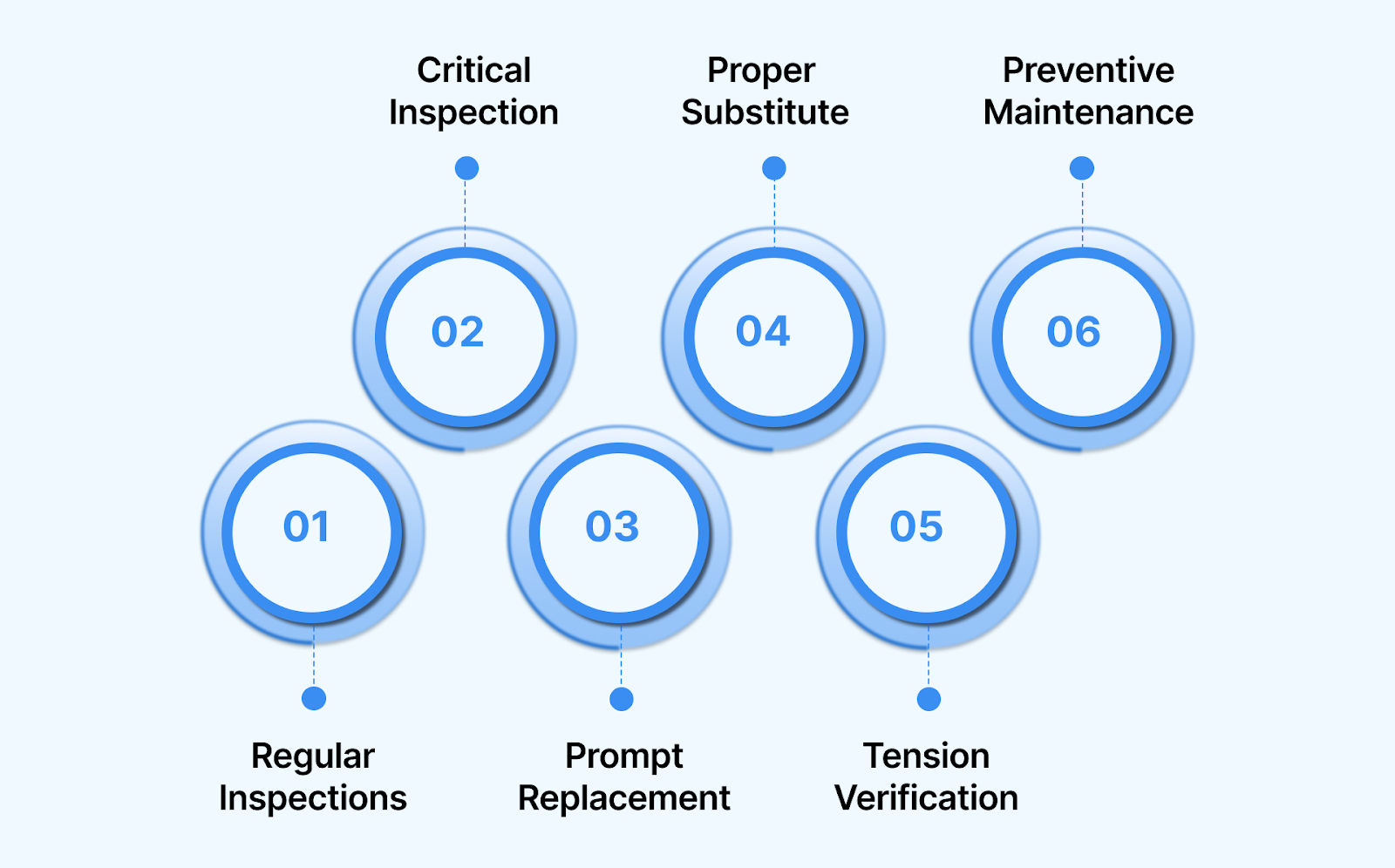Automotive Cable Ties: Types, Uses, and Applications
August 1, 2025

Are your automotive wiring systems failing under pressure, risking costly downtime and safety hazards?
When you think about a vehicle's electrical system, you may not immediately realize how crucial it is to its overall performance and safety. But wiring that isn't properly secured can cause issues ranging from malfunctions to severe safety risks.
Automotive wiring systems face constant wear and tear, including extreme temperatures, vibrations, and even exposure to harsh elements. In such demanding conditions, cable ties play a key role in keeping everything in place, preventing chaos before it even begins.
In this blog, we’ll explore the uses and applications of automotive cable ties, from why they matter to how to use them effectively. We’ll also guide you in choosing the right cable ties, ensuring long-lasting solutions for your vehicle's wiring needs.
What are Cable Ties and How Do They Work?
Cable ties, often referred to as zip ties, are simple yet incredibly effective fasteners used to bundle and secure items, most commonly cables and wires. These versatile tools come in various materials, including nylon, polypropylene, and stainless steel, and are used across numerous industries for organizing, fixing, and securing components.
How It Works:

The design of a cable tie is straightforward but highly efficient. Let’s break down their mechanism and functionality step-by-step:
- It features a flexible strap with a ratchet mechanism inside that locks into place as the tie is pulled tight.
- As you loop the cable tie around the object you need to secure, the teeth inside the tie grip and hold firmly.
- Once you pull the tie to its desired tightness, it locks automatically, securing the cables or items.
- Releasing it is just as simple for releasable cable ties: a small mechanism or lip is pressed to release the teeth, allowing you to remove or adjust the tie.
This easy application and reliable hold make cable ties the go-to fastener for various tasks.
Now that we know what cable ties are, let’s explore why they’re essential for maintaining the safety and performance of your vehicle’s wiring system.
Also read: Cable Ties vs Zip Ties: Key Differences Explained
Why Cable Ties Matter in the Automotive Industry

Cable ties are an essential tool for maintaining vehicle performance, safety, and longevity. In the automotive industry, these simple yet powerful fasteners play a significant role in managing the complexities of modern vehicle wiring and ensuring components stay in place during even the toughest conditions.
Here's why cable ties are indispensable in automotive applications:
- Secure Wiring: Cable ties keep wires in place, preventing them from contacting sharp edges, moving parts, or hot surfaces that can cause damage.
- Safety Enhancement: Securing wiring and components reduces safety hazards like electrical fires or short circuits, ensuring vehicle safety.
- Optimized Performance: Properly secured wiring ensures smooth signal flow and efficient operation of all vehicle systems, supporting better performance.
- Easier Maintenance: Neatly bundled wires make repairs and inspections quicker, saving time and reducing labor costs.
- Versatile Applications: Cable ties are used for mounting hoses, securing trim panels, and even temporary roadside repairs, offering flexibility in automotive work.
- Cost-Effective: Reliable and budget-friendly, cable ties provide a durable vehicle maintenance and safety solution.
Understanding the importance of cable ties sets the stage to explore the different types specifically designed for automotive applications.
Types of Cable Ties Used in the Automotive Industry

When it comes to automotive wiring, selecting the right cable tie is key to ensuring secure and reliable connections. Various types of cable ties serve specific purposes, from managing standard wiring to withstanding extreme conditions. Here's a breakdown of the various types of automotive ties:
- Outside Push Mount Tie: Designed for mounting bundles to surfaces like vehicle chassis, these ties can be easily pressed into pre-drilled holes for a secure, vibration-resistant hold.
- Chassis Tie HD & Holder: These ties are primarily used for heavy vehicles in the automotive industry. They feature a two-piece construction and adjustable length for a secure fit.
- Push Mount Fir Tree Ties: These ties are used for securing wire harnesses in automotive applications, aviation, and panel building. Their fir tree design minimizes access to dust and water, making them ideal for harsh environments.
- Outside Serration Ties: These ties are used for indoor and outdoor cable bundling and feature outer serrations that reduce the risk of damage to the surface of the strapped object or cable insulation.
Surelock provides an extensive range of high-quality cable ties to ensure secure bundling and optimal performance, even in the toughest conditions. Whether you need light-duty or heavy-duty ties, we've got the right fit for every application.
Having identified the types of cable ties, let’s move on to their practical applications in automotive settings.
Common Automotive Uses and Applications of Cable Ties

Cable ties are crucial for wiring management and many other applications that ensure vehicle safety, efficiency, and longevity. Here are the most common uses and applications of automotive ties:
- Wire Harness Management: Cable ties are indispensable for securing vehicle harnesses, ensuring wires stay in place, and avoiding potential issues. They prevent cables from rubbing against hot engine components, moving parts, or sharp edges. This reduces wear and tear, minimizing the risk of short circuits and making future repairs easier.
- Hose and Line Support: Cable ties secure vacuum lines, fuel vapor tubes, and washer fluid hoses. They route these lines cleanly through the engine bay, preventing them from rubbing against other parts. This helps maintain proper functionality and prevents unnecessary damage to these essential components.
- Emergency Fixes: In emergencies, cable ties provide quick, temporary solutions. They serve as reliable makeshift fasteners, from tying up and dragging mufflers to securing headlights. In racing or on-the-road situations, these ties can hold broken grilles together or patch sagging skid plates, helping drivers continue safely until permanent repairs can be made.
- Organizing the Trunk and Cabin: Cable ties help keep the trunk and cabin organized by neatly bundling cables, such as jumper cables, charging cords, and air pump hoses.
- Securing Automotive Components: Cable ties hold panels, trim, and other automotive components together. Whether securing a loose panel or temporarily holding parts in place during repairs, they offer a strong and reliable solution.
- Mounting Components: Some components, like hoses or wiring, need to be mounted to the chassis. Use appropriate mounting ties to secure wire bundles to surfaces, particularly when exposed to constant vibrations.
- Harness Assembly: Some cable ties are ideal for organizing and identifying wire bundles in harness assemblies. These ties simplify wiring and help identify components for easy diagnostics or repairs.
- Temporary Fixes During Vehicle Modifications: During modifications or upgrades, cable ties provide a temporary fastening solution for parts like fog lights, stereo systems, or additional sensors. These ties are particularly useful when quick changes are needed during vehicle repairs or when installing new parts.
Now that we’ve seen the uses, choosing the right cable tie is crucial. Let’s break down how to select the perfect fit for automotive applications.
Selecting the Right Cable Tie for Automotive Use

Choosing the correct cable tie is essential for ensuring that your vehicle’s wiring system stays secure and functions properly under challenging conditions. Here’s how to select the right automotive tie:
- Material: The material of an automotive tie impacts its strength, flexibility, and resistance to environmental factors. Consider the environment and load when choosing. For general use, a strong and flexible nylon might suffice.
- Size: The right size ensures that the tie can securely bundle the wires without over-tightening or being too loose. Choose a tie that fits the components you’re bundling, ensuring a snug but not overly tight hold. A larger size may be necessary for bigger bundles or thicker components.
- Tensile Strength: A cable tie's tensile strength determines its holding power. Lighter ties are suitable for small, low-stress applications, while higher-tensile strength ties are necessary for heavy-duty tasks or high-stress areas where more support is needed.
- Environmental Considerations: Consider the conditions the cable tie will face. High temperatures, exposure to UV light, moisture, or chemicals all impact its longevity and effectiveness. Be sure to choose a tie designed to handle the specific environment where it will be used.
- Ease of Use: Cable ties should be easy to install, secure, and release when needed. If the application requires frequent adjustments, consider using ties that allow for easy removal or re-tightening without damage.
- Durability: Look for ties that are designed to last, especially in demanding automotive conditions. Consider factors like vibration, heat, and chemical exposure when choosing a tie. A durable tie ensures long-term reliability without needing frequent replacements.
Find the perfect fit for your vehicle’s wiring needs with Surelock’s reliable, releasable, non-releasable, and push-mount cable ties. Explore our selection now!
Choosing the right tie is just the start. Let’s walk through the proper installation and usage to maximize effectiveness.
How to Install and Use Cable Ties in a Vehicle
Installing and using cable ties correctly ensures secure and long-lasting wire management, preventing potential issues down the road. Follow these simple steps for a reliable installation:
- Plan the Cable Route: Before you start, map out the path your cables will follow. Avoid routing them near hot surfaces, moving parts, or sharp edges. Planning ahead prevents wear and damage to the cables.
- Use Mounting Points: Many vehicles have small holes, slots, or hooks built into the body. Use these mounting points to attach cable ties and keep bundles neatly in place securely.
- Tension the Tie Properly: When pulling the tie, ensure it’s tight enough to secure the cables without over-tightening. Too much tension can damage the cables or the plastic tie itself. Aim for a snug fit, ensuring the tie holds firmly without cutting into the insulation.
- Cut Excess Tie Cleanly: Once the cable tie is secure, use a flush cutter to trim any excess length. Avoid leaving sharp edges, as they could cause injury or damage to nearby components. A clean cut ensures that nothing interferes with the tie's function or the surrounding parts.
- Check Clearance and Positioning: Inspect the installed ties for clearance, particularly near fans, pulleys, or belts. Ensure that there’s enough space to prevent the tie from catching or moving parts from rubbing against the cable.
- Use a Tensioning Tool for Consistency: For professional results, especially in larger bundles, use a cable tie tensioning tool. This ensures even tension across all ties, preventing over-tightening and ensuring consistency in your installation.
Following these steps will help maintain a clean, organized, and secure wiring system that can withstand the rigors of automotive environments.
Installation is key, but maintenance matters too. Let’s discuss how to properly care for and replace your cable ties to ensure they continue to perform at their best.
Maintaining and Replacing Cable Ties in Vehicles

Cable ties are designed to be durable, but like any part of a vehicle’s wiring system, they need regular inspection and maintenance to ensure long-term reliability. Here’s how to keep your cable ties in optimal condition:
- Regular Inspections: Periodically check cable ties for signs of wear and tear, especially in high-stress areas like the engine bay. Look for cracks, brittleness, discoloration, or fraying, which may indicate degradation due to heat, UV exposure, or chemical contact.
- Examine Ties in Critical Areas: Pay special attention to cable ties near moving parts, hot surfaces, or moisture exposure. These areas experience the most wear, and ties here are more likely to fail if not regularly monitored.
- Replace Damaged Ties Immediately: If a cable tie shows signs of damage, replace it as soon as possible to prevent wires from becoming loose or exposed. A damaged tie can compromise the integrity of the wiring harness and lead to electrical malfunctions or safety issues.
- Choose the Right Replacement Tie: When replacing a damaged tie, select one that is suitable for the specific environment it will be used in.
- Check for Proper Tension: If the cable tie has loosened over time, it may need re-tightening or replacement. Make sure the new or replaced tie holds the bundle firmly without over-tightening, which could damage the wires or insulation.
- Preventive Maintenance: Use the correct types of cable ties to extend their lifespan. Additionally, avoid overtightening during installation, as this can weaken both the tie and the wires.
By following these maintenance tips, you can ensure that your vehicle's wiring system remains secure and functional, minimizing the need for frequent replacements and ensuring long-lasting performance.
Conclusion
In the automotive world, cable ties are essential for securing wiring and components, ensuring safety, and maintaining vehicle performance. Whether you're managing wire harnesses or tackling emergency fixes, choosing the right cable tie makes all the difference.
Surelock’s range of high-quality, durable cable ties, including releasable and non-releasable options, is designed to meet the toughest automotive demands.
Contact us today to ensure your wiring stays safe and organized.



